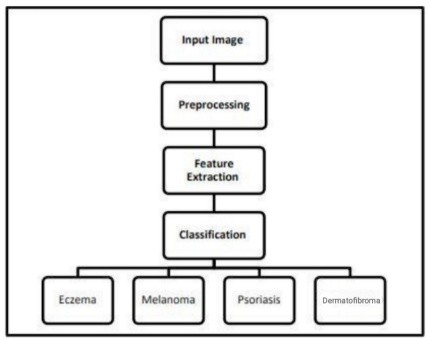Skin Disease Detection Using Machine Learning Algorithm
Main Article Content
Abstract
Skin cancer, particularly melanoma, is one of the most dangerous forms of cancer, especially if not detected early. Melanoma arises from pigmented areas of the skin, such as moles, which are visible and can be examined through simple, non-invasive visual inspection the clinical protocols of its recognition also consider several visual features. Melanoma is the deadliest form of skin cancer, which is considered one of the most common human malignancies in the world. Early detection plays a vital role in improving patient outcomes and improve the chance of surviving. Recent advances in deep learning techniques in image recognition tasks promises a great success for medical image analysis, including melanoma skin disease diagnosis. Deep neural networks, which rely on activation functions, are pivotal in optimizing performance for tasks like medical image classification. These functions help improve the accuracy and efficiency of image recognition systems. Melanin, the pigment responsible for the color of human skin, is produced by special cells in the skin. If these cells are damaged or unhealthy, it can lead to visible discoloration of the skin. Skin discoloration, especially on the cheeks, can be an alarming sign of a potential skin disease, and in some cases, a loss of natural skin appearance. Monitoring and analyzing these discolorations can serve as a guide for early diagnosis. In this research, different imaging techniques like preprocessing method, segmentation and morphological operations are used to analyze and extract information about skin discolorations, particularly lesions on the cheek. This project is developed in python using convolutional neural network.
